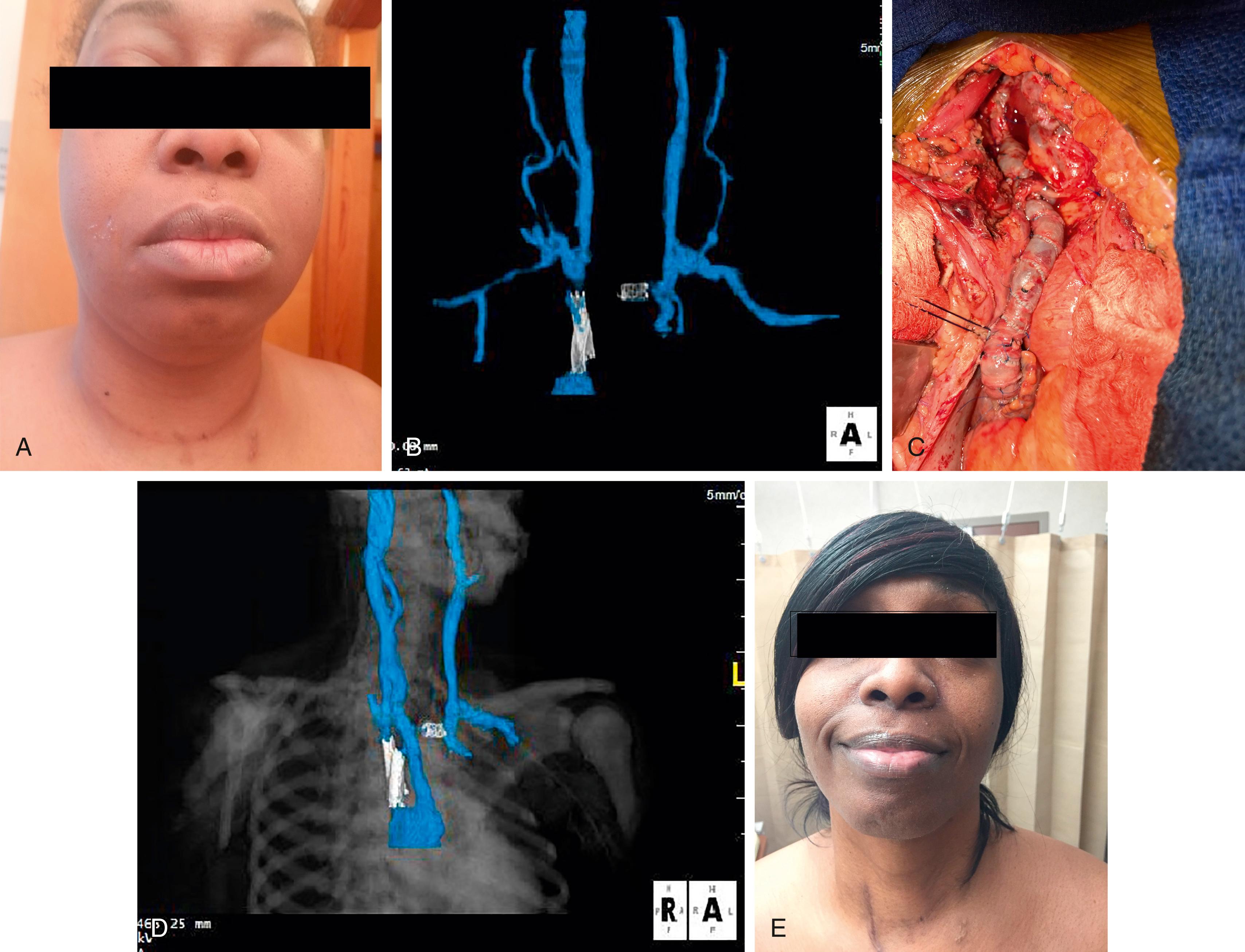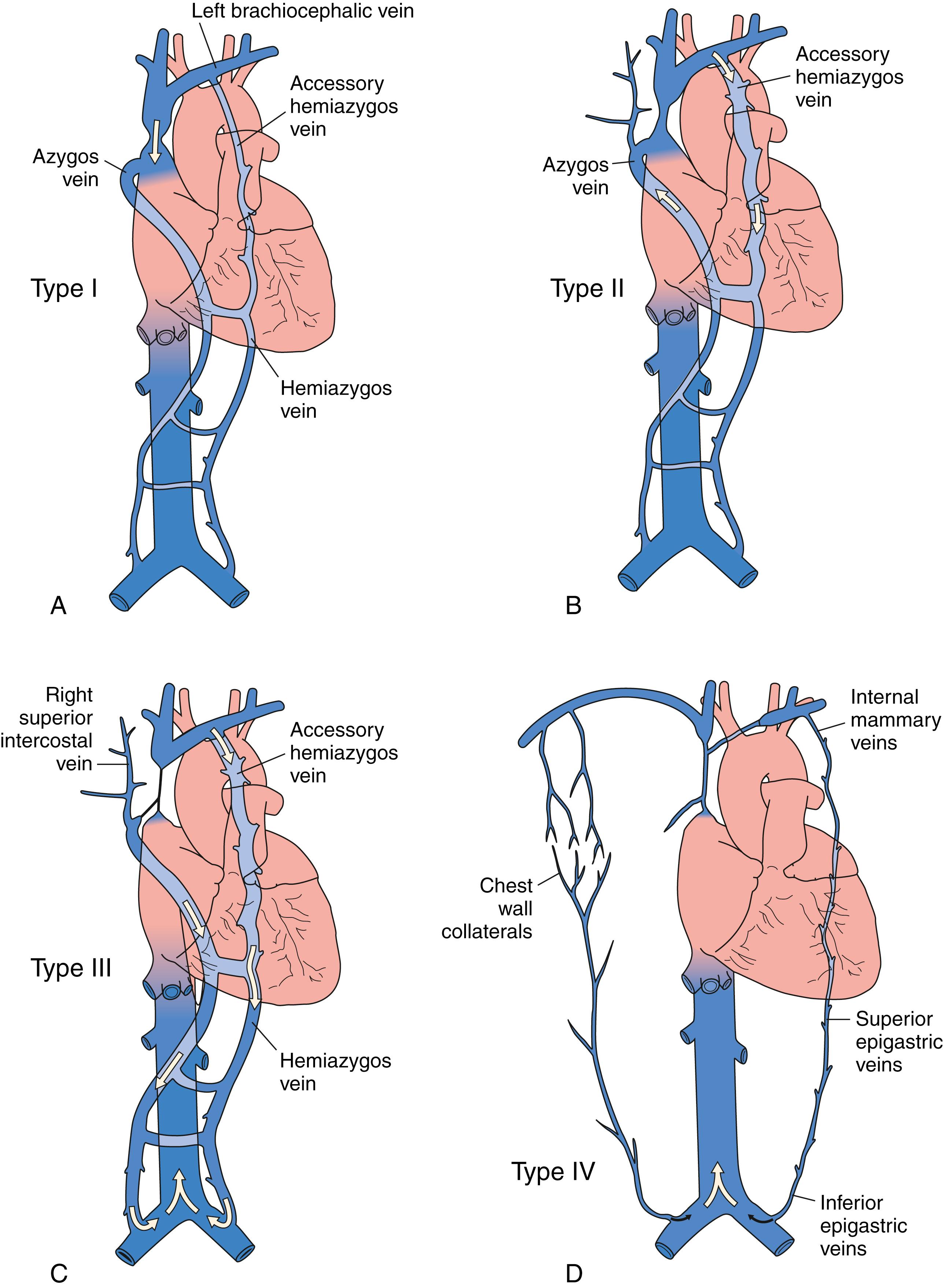Physical Address
304 North Cardinal St.
Dorchester Center, MA 02124
In the United States each year about 15,000 patients develop symptoms of venous congestion of the head and neck due to occlusion of the superior vena cava (SVC) or innominate veins. SVC syndrome is caused by malignant tumors of the lung and mediastinum in 60% of the cases. The most frequent nonmalignant causes include placement of intravenous catheters, pacemaker wires, or mediastinal fibrosis.
Treatment for SVC syndrome involves creating outflow for the congested veins in the head and neck. Both endovascular and open surgical techniques are possible. Endovascular treatment for both acute and chronic SVC occlusion has become the first line of treatment for most patients because it is less invasive, and patients recover more quickly than following open surgery. Treatment in patients with advanced malignancy is frequently palliative, but for those with benign disease it is usually curative. Few areas of venous disease provide a more satisfying experience for both the patient and the vascular specialist. Relief from severe, frequently incapacitating symptoms of venous congestion of the head and neck is almost instantaneous, and benefit is generally long lasting. In this chapter, we review the etiology, clinical presentation, and diagnostic evaluation of SVC syndrome, and present techniques and results for its treatment with endovascular and open surgical methods.
The first case of SVC obstruction described by William Hunter in 1757 was due to an aortic aneurysm. Aortic aneurysms remained the second most common cause of SVC syndrome after primary malignant thoracic tumors until the mid-1900s. Infectious causes such as tuberculous and syphilitic mediastinitis also decreased markedly early in the 20th century. Lung cancer with mediastinal lymphadenopathy and primary mediastinal malignancy have become the most frequent causes of malignant SVC syndrome in the past three decades, constituting approximately 60% of cases. Of these cases, nonsmall cell lung cancer is the cause in 50%, followed by small cell lung cancer (22%), lymphoma (12%), metastatic cancer (9%), germ cell cancer (3%), and thymoma (2%). Other mediastinal malignant tumors leading to SVC syndrome include medullary or follicular carcinoma of the thyroid, teratoma, angiosarcoma, and synovial cell carcinoma.
Benign disease is the cause of SVC syndrome in 40% of cases. Mediastinal fibrosis and granulomatous fungal disease, such as histoplasmosis, were formerly the most frequent benign causes. However, indwelling central venous catheters and cardiac pacemakers are now the most common benign cause. Over 5 million central venous catheters and 170,000 pacemakers are now implanted annually in the United States and are associated with upper extremity or central deep venous thrombosis (DVT) in 7% to 33% of patients. SVC syndrome reportedly occurs in 1% to 3% of patients with central venous catheters and 0.2% to 3.3% of patients with implanted pacemakers. Previous radiotherapy to the mediastinum, retrosternal goiter, and aortic dissection can also cause SVC syndrome. The risk of venous thrombosis is increased in patients with thrombophilia such as factor V Leiden mutation and deficiencies in circulating natural anticoagulants, such as antithrombin III, protein S, and protein C.
Signs and symptoms of venous congestion of the head, neck, and upper extremities are determined by the duration and extent of venous occlusive disease and the amount of collateral venous circulation that develops. Patients with SVC syndrome present with a feeling of fullness in the head and neck that is exacerbated when the patient bends over or lies flat in bed. The severity of disease can be graded by the number of pillows needed by the patient to sleep comfortably. Other symptoms include dyspnea on exertion, orthopnea, headache, dizziness, syncope, visual changes, confusion, and cough ( Table 162.1 ). , , Dilated neck veins and swelling of the face, neck, and eyelids are the physical signs most commonly seen ( Fig. 162.1 ). Prominent chest wall collateral veins and ecchymosis and cyanosis of the face can occur. Although symptoms are usually localized to the head and neck, mild to moderate upper extremity swelling may also develop. In cases of malignant SVC syndrome, hemoptysis, hoarseness, dysphagia, weight loss, lethargy, and palpable cervical tumor or lymph nodes may be present. Patients with lymphoma may also present with fever and night sweats. In patients with end-stage renal disease (ESRD), asymptomatic SVC occlusion may be unmasked upon creation of an arteriovenous fistula (AVF), with rapid development of arm swelling and neck engorgement.
| Symptoms | Number of Patients | % |
|---|---|---|
| Feeling of fullness in head or neck | 61 | 87 |
| Dyspnea on exertion or orthopnea | 39 | 56 |
| Headache | 27 | 39 |
| Dizziness or syncope | 25 | 36 |
| Visual problems | 11 | 25 |
| Cough | 10 | 22 |
| Nocturnal oxygen requirement | 3 | 16 |
| Protein losing enteropathy | 1 | 2 |
| Head and neck swelling | 65 | 93 |
| Large chest wall venous collaterals | 40 | 57 |
| Facial cyanosis | 24 | 34 |
| Arm swelling | 23 | 33 |
| Pleural effusion | 2 | 3 |

The diagnosis of SVC obstruction is usually suggested by a detailed history and physical examination. The diagnosis may be confirmed by a variety of tools, including plain radiographs, ultrasonography, computed tomography (CT), venography, and magnetic resonance imaging (MRI). The appropriate diagnostic study for an individual patient includes not only the demonstration of the underlying cause, but also the site and extent of obstruction as well as the routes of collateral venous circulation.
Plain film radiographs of the chest are readily available and often abnormal in patients with SVC obstruction. Most common findings include mediastinal widening, right hilar mass, pleural effusion, bilateral diffuse infiltrates, and upper lobe collapse. However, a normal radiograph of the chest does not preclude the diagnosis of SVC obstruction. , , Occasionally, dilated collateral veins may be visible, especially enlargement of the azygos vein or superior intercostal vein (aortic nipple) draining the hemiazygos system. In more than 90% of patients a diagnosis of SVC syndrome can be made on the basis of clinical presentation and plain chest radiograph.
Duplex ultrasound (DUS) evaluation is an effective, noninvasive screening technique in the patient with suspected SVC obstruction. Although direct visualization of the SVC is not possible with transthoracic DUS, valuable information can be obtained. The subclavian and internal jugular veins are accessible to sonographic evaluation and can provide indirect evidence of SVC patency or obstruction. In the presence of SVC obstruction the normal respiratory flow variation caused by changes in intrathoracic pressure seen in patent subclavian veins is lost. This can be demonstrated by reduced or unchanged diameter and blood flow through the subclavian veins in response to respiratory maneuvers such as a sudden sniff or a Valsalva maneuver. Collateral vessels can be detected within the chest wall or in the mediastinum.
Radionuclide venography has been used in the diagnosis of SVC syndrome. A technetium 99m pertechnetate scan ( 99m Tc), performed with bilateral simultaneous injection of the radionuclide tracer into the arm veins, can not only demonstrate the presence of SVC obstruction and associated collateral pathways but also provide functional aspects of the SVC obstruction using time–density curves. An advantage is the potential usefulness as a follow-up examination in determining therapeutic response. The disadvantage of radionuclide venography is the lower-resolution anatomic detail and the inability to determine the cause of the SVC obstruction.
Computed tomographic angiography (CTA) has become the first line of diagnostic imaging due to its widespread availability, speed and ease of performance. It accurately depicts the location and extent of obstruction and can usually distinguish benign from malignant mediastinal disease. Any mass or tumor is easily identified, and the central lines or pacemaker wires are well seen. CTA will also identify the collateral pathways, including the: (1) azygos–hemiazygos pathway, (2) internal mammary pathway, (3) lateral thoracic–thoracoepigastric pathway, and (4) vertebral pathway and small mediastinal veins. Less commonly, unusual shunts, including hepatic parenchyma (an intense focal enhancement in the medial segment of the left lobe of the liver) and pulmonary pathways are identified on CTA. ,
The advantages of magnetic resonance venography (MRV) include the ability to demonstrate anatomic structures in multiple planes and to delineate the central venous chest veins and collateral vessels. MRV is a relatively noninvasive modality and does not require the administration of iodinated contrast material. The disadvantage is its contraindication in patients with pacemakers and aneurysm clips as well as inability of patients with SVC syndrome to lie flat due to orthopnea. The recognition of problems using gadolinium in patients with renal insufficiency decreased the utility of MRV; however, newer but significantly more expensive contrast agents such as Eovist (gadoxetic disodium) and Multihance (gadobenate dimeglumine) are being introduced into practice.
Venography was long considered the “gold standard” for accurate depiction of central venous obstruction and was routinely used as an anatomic roadmap before reconstructive surgery. Venography also depicts the presence and direction of venous collateral flow. It is performed by simultaneous injection of contrast material in bilateral superficial arm veins. Stanford and Doty described four venographic patterns of SVC syndrome, each having a different venous collateral network depending on the site and extent of SVC obstruction ( Fig. 162.2 ). Type I is partial; type II is complete or near-complete SVC obstruction with antegrade flow in the azygos vein; type III is 90% to 100% SVC obstruction with reversed azygos blood flow; and type IV is extensive mediastinal central venous occlusion with venous return occurring through the inferior vena cava (see Fig. 162.2 ).

It is important to remember that during upper extremity venography only veins and collateral pathways between the injection site and right atrium are visualized; the internal jugular veins frequently used as inflow for a surgical bypass are not visualized. More complete anatomic definition can be obtained effectively and noninvasively with CTV or MRV. In contemporary practice the role of conventional venography has shifted from a diagnostic modality to performance only during therapeutic endovascular treatment of SVC occlusion.
Become a Clinical Tree membership for Full access and enjoy Unlimited articles
If you are a member. Log in here